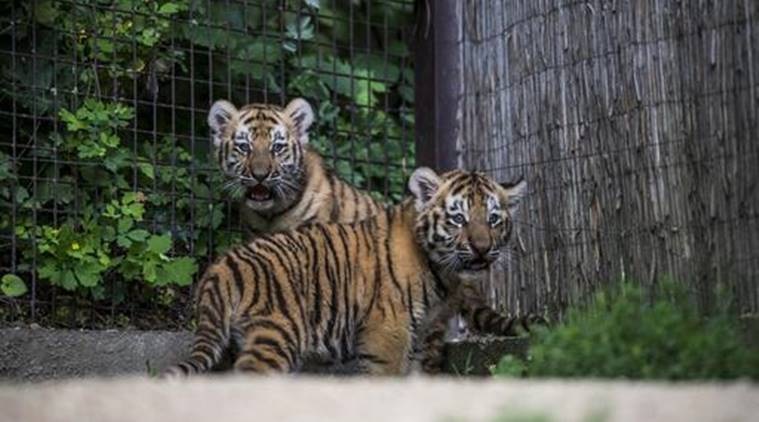 It was kept in a forested enclosure of about seven hectares, where natural preys were released. The tigress learnt to kill and is now believed to be on its own on that count. (Representational)
It was kept in a forested enclosure of about seven hectares, where natural preys were released. The tigress learnt to kill and is now believed to be on its own on that count. (Representational)
After “successful re-wilding” of the female cub of tigress T1 (Avni), the Forest Department has taken the call to release it into the wild. The decision was taken at a recent meeting of the concerned committee, headed by Principal Chief Conservator of Forest (Wildlife) Nitin Kakodkar.
Avni, which was responsible for killing at least five persons, was shot dead under an official order by a shooter from Hyderabad, Asghar Ali, in November last year after a three-month- long chase in the forest of Pandharkawada in Yavatmal district. The killing had led to global outrage.
T1 had two cubs, male T1C1 and female T1C2, which were also ordered captured since they were seen as probably carrying the imprint of Avni’s conflict with humans and hence could also develop into potential conflict animals. They were also small – about one year old – when orphaned and hence may have found surviving without their mother difficult.
The female cub, T1C2, was captured 20 days after Avni’s killing and was brought to Nagpur, where it was decided to put the animal in a large enclosure in the Pench Tiger Reserve (PTR) and do its ‘re-wilding’, an experiment to train it in developing its natural instincts without getting a human imprint. The experiment has been on since then under PTR Field Director Ravikiran Govekar’s supervision.
“We have come to the conclusion that the process of re-wilding has been completed and the tigress is fit to be released into the wild,” Kakodkar told The Indian Express. “Govekar will now prepare a proposal and send it to National Tiger Conservation Authority for its approval,” he added.
Kakodkar said the committee has deliberated on various options of areas where the tigress could be released. “No final decision has yet been taken on which area is to be selected,” he said.
The training involved developing the animal’s ability to kill natural preys. It was kept in a forested enclosure of about seven hectares, where natural preys were released. The tigress learnt to kill and is now believed to be on its own on that count.
Asked about the animal’s ability to carve out a territory against a competitor since it was used to a safe territory till now where no other tigers could enter, Kakodkar said, “It also regularly sprays its urine around the place, which shows that it has also learnt to mark its territory. So, it should be able to do that wherever it gets released.”
Asked about the probable areas where the tigress could be released, the PCCF said, “We checked four options, PTR, Melghat in Amravati district, Gadchiroli and Navegaon-Nagzira Tiger Reserve (NNTR) in Bhandara and Gondia districts. The option of releasing it in the same area where it is currently held, by simply opening the enclosure gate, is problematic since there is a tigress with cubs moving in close vicinity. NNTR appears the best option, particularly the Navegaon part that is now free of human habitation after rehabilitation of five villages. It also has fewer tigers and can easily accommodate more. But a final decision hasn’t been taken yet…”.
Meanwhile, T1’s other cub T1C1, a male, is believed to be roaming in Pandharkawada forest after the Forest department failed to capture it after several months of effort. “It was being sighted when the capture effort was on. After that, its last trap camera picture had come in December, 2019. Since then, it hasn’t been seen. It’s possible that it might have migrated in search of a female,” said Prafulla Wagh, who retired on June 30 as the divisional manager of the Forest Development Corporation of Maharashtra (FDCM), Yavatmal, and was the supervisor of the area where T1C2 was moving.